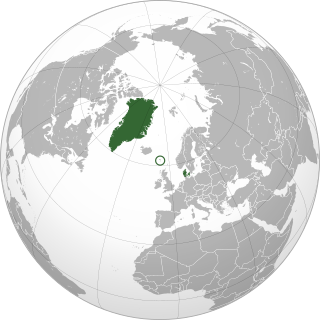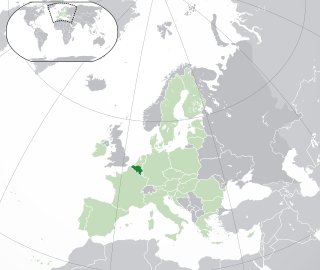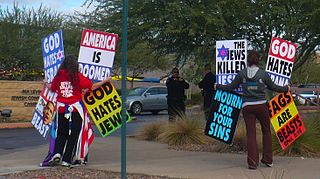| Part of a series on |
| Antisemitism |
|---|
 |
Evidence for the presence of Jewish communities in the geographical area today covered by Austria can be traced back to the 12th century. In 1848 Jews were granted civil rights and the right to establish an autonomous religious community, but full citizenship rights were given only in 1867. In an atmosphere of economic, religious and social freedom, the Jewish population grew from 6,000 in 1860 to almost 185,000 in 1938. In March 1938, Austria was annexed by Nazi Germany and thousands of Austrians and Austrian Jews who opposed Nazi rule were sent to concentration camps. Of the 65,000 Viennese Jews deported to concentration camps, only about 2,000 survived, while around 800 survived World War II in hiding. [1]
Contents
Antisemitism did not cease to exist in the aftermath of World War II and continued to be part of Austrian political life and culture with its strongest hold in the political parties and the media. Bernd Marin, an Austrian sociologist, has characterized antisemitism in Austria after 1945 as an ‘antisemitism without Jews’, since Jews constituted only 0.1 percent of the Austrian population. Antisemitism was stronger in those areas where Jews no longer lived and where previously practically no Jews had lived, and among people who neither have had nor have any personal contact with Jews. Since post-war prejudice against Jews has been publicly forbidden and tabooed, antisemitism was actually 'antisemitism without antisemites', but different expressions to it were to be found in the Austrian polities. During the 80', the taboo against open expressions of explicitly antisemitic beliefs has remained, but the means of circumventing it linguistically have extended its boundaries in such a way that the taboo itself appears to have lost some of its significance. Anti-Jewish prejudices which had remained hidden began to surface and were increasingly found in public settings. Thus, verbal antisemitism was rarely expressed directly, but rather used coded expressions, which reflected one of the country's major characteristics - ambivalence and ambiguity toward its past. [2] [3]
Today the Jewish community of Austria consists of about 8,000 persons. The ‘Jewish Faith’ community is the fifth largest recognized religious community in Austria with the status of a corporation under public law. Nevertheless, antisemitism in contemporary Austria seems to focus more on diffused and traditional stereotypes than on acts of physical aggression. It is a main ideological component of most extreme right-wing groups and their publications in Austria. Extreme rightist and neo-Nazi groups have intensified their activities since 2000, encouraged by the FPÖ electoral success in March 1999. During the first years of the 21st century, themes directly concerned with the National Socialist past have been repeatedly debated in the public sphere: demonstrations were held against the Wehrmacht exhibition, there was controversy regarding a Holocaust memorial that was officially opened in 2000 and the question of restitution. [4]
Latent antisemitism is an issue in several rural areas of the country. Some issues in the holiday resort Serfaus gained special attention in 2010, where people thought to be Jews were barred from making hotel bookings, based on racial bias. Hostility by some inhabitants of the village towards those who accommodate Jews was reported. Several hotels and apartments in the town confirmed that Jews are banned from the premises. Those who book rooms are subjected to racial profiling, and rooms are denied to those who are identified as possible Orthodox Jews. [5]
According to the CFCA (the Coordination Forum for Countering Antisemitism) there were more than 15 antisemitic incidents during the years 2012–2013. Most of them included swastika graffiti, the desecration of Jewish graves, the vandalism of Stepping Stones (stones that commemorate names of people murdered during the holocaust) -- but the most intense was the expulsion of a young Hasidic man from a vacation apartment by his Judaism. [6] In 2014 two stepping stones were again vandalized. [7] [8] On July that year, while operation Protective Edge took place in Gaza Strip, a training match between Israeli and Austrian football squads ended with a violent attack on the Israeli team by some Austrian pro-Palestinian fans. [9] A few months later, a biker wearing neo-Nazi insignia waved a knife and shouted antisemitic slogans at passers-by next to a synagogue in Vienna. [10] A monument commemorating Holocaust victims was also defaced in the capital in that year. [11]
In the beginning of 2015 there were at least three reports of antisemitic graffiti in Austria, all on memorials for the Holocaust: in the Mauthausen-Gusen concentration camp complex, [12] on a memorial for the Jews of Hietzing [13] and on a wall at Salzburg. [14] Later that year, plaques dedicated to Jewish victims of the Holocaust were desecrated in Wiener Neustadt. [15] In July that year, a pole with a Star of David flag was toppled and sprayed with a swastika at the Religions Campus in Aspern. The act was condemned by the Archbishop of Vienna. [16]
In August 2020, an immigrant (2013) from Syria was arrested in Graz for attacking Jews and defacing a synagogue with "Free Palestine" graffiti. was suspected in an attack on a Catholic church, and on the LGBT community. It was characterized by officials as Islamist anti-Semitism. [17] [18]





